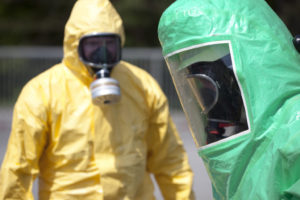Every year, experts estimate at least 600 million people around the world suffer from a foodborne illness. While there are various causes for food poisoning, one primary reason that’s entirely preventable is cross-contamination. Experts define bacterial cross-contamination as the transfer of microorganisms like bacteria from one matter to another. Other cross-contamination types include the transfer of chemicals, toxins, or food allergens.
Contrary to what many people believe, anyone can get foodborne illnesses from other sources other than the food that you eat at restaurants. The plants and animal products that you eat can cause foodborne diseases, too. Other sources include storage, transportation, food distribution, and secondary food production, such as food processing and manufacturing. Provided that there are various points at which cross-contamination can happen, it’s crucial to learn how to prevent it from happening.
Wash hands, surfaces, and surfaces as often as possible.
Germs and bacteria that can make you ill can thrive in various spaces, especially around your kitchen and food. They can survive in your hands, utensils, and even your countertops, too. That’s why it’s crucial to wash your hands immediately using soap and water to get rid of all the dirt and viruses trapped in your hands. Please do it for at least 20 seconds to ensure that you’ve gotten rid of everything.
It’s best to wash your hands before, during, and after you prepare your food. It’s best to do it after handling raw meat, poultry, and seafood, too. It’s also advisable to do it after using the toilet or changing diapers.
Foodsafety.Gov, A federal government website managed by the U.S. Department of Health and Human Services says that washing cutting boards and dishes can also help prevent the spread of germs and viruses within your house. To do it, you need to use hot, soapy water to get rid of all the dirt and grime. It’s also best to wash your dishcloths in your washing machine’s hot cycle.

Always separate your kitchen utensils from raw food.
Healthline says that mixing contaminated foods with non-contaminated ones can result in food-to-food cross-contamination. Thus, allowing harmful germs and bacteria to spread through every surface and start to populate.
So, it’s best to use plates and cutting boards when preparing fresh produce such as meat, seafood, and poultry. You can also consider using a single cutting board for preparing fresh produce and another one for raw meat. It’s also best to use separate utensils and plates for both cooked and raw foods. Then, once your dish is complete, you can store it on any shadow board that you purchased online.
Meanwhile, you can separate raw meat from other foods when doing your groceries. Then before you check out, you can place the raw meat in containers. Freeze them afterwards if you’re not going to cook them immediately.
Cook your food at the right heat.
You need to ensure that you cook your food safely to ensure that all the germs that can make you sick are dead. To ensure that it’s at the right temperature, you can use a food thermometer to ensure that it’s safe to eat. When you think that it’s cooked, you can stick the food thermometer in the food’s thickest part. You can check the Cooking Temperatures Chart to ensure that it’s at a safe temperature.
Learning proper food safety practices is crucial in reducing the risk of any cross-contamination. It’s always important to wash your hands and all the surfaces. Also, you need to store your foods properly to prevent possible bacterial growth. By practicing safe food handling, you’ll have better chances of protecting yourself from getting sick.



















